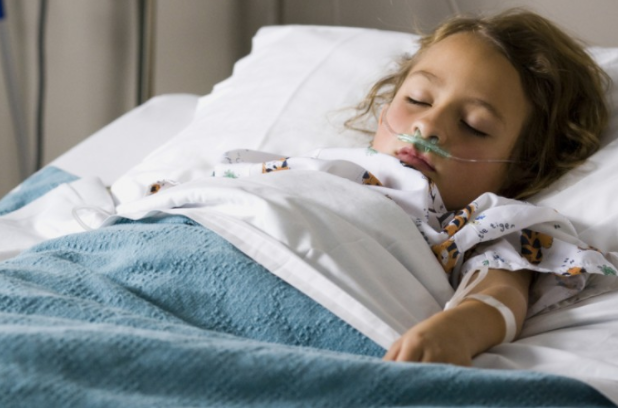COVID-19 Update April 29, 2020
- icshealthsciencejournal

- Apr 29, 2020
- 4 min read
Updated: May 24, 2020
This article contains:
Importance of Nutrition Regarding COVID-19
"COVID Toes" & Other Serious Complications in Children
Importance of Nutrition Regarding COVID-19
Written By: Kandharika Bamrungketudom
In general, there is a link between eating a nutritious diet and having a high level of immunity. This same principle applies to the body’s resistance to the novel coronavirus as well. Certain nutrients affect the body by boosting the immune system through cell activation, regulating the production of cell signaling molecules, controlling gene expressions and also affecting microbes that live within the gut. All this shapes not only the overall effectiveness of the immunity in the body but the mental health as well.
The lockdown due to the COVID-19 pandemic has brought up a significant challenge in acquiring food that is rich in nutrients. A study has been conducted on the community level of those that stock up food during the pandemic. It shows that those who are over 60 years old or those that are affected by existing chronic health conditions — therefore more susceptible to the novel coronavirus — are in danger of malnutrition due to their limited ability to purchase and stock up food, while those that are better placed in the society tend to hoard food supplies, causing shortages within local stores.
With the community-level problem of food hoarding in mind, the European Journal of Clinical Nutrition has made some recommendations regarding the situation.
Spreading awareness of the possible negative effects on the community of food hoarding
Identifying and supporting those that are at risk of malnutrition
The World Health Organization (WHO) has also made health recommendations regarding the consumption of nutrients during the COVID-19 pandemic.
Eating fresh and unprocessed food such as fruits (2 cups per day), vegetables (2.5 cups per day), grains (180 grams per day) and food from animal sources or beans (160 grams per day)
Overcooking vegetables may lead to loss of nutrients
Drinking 8-10 cups of water per day — this is very essential since water transports nutrients in the body and rids the body of wastes
Eating food that contains unsaturated fats (such as fish, avocado, nuts, olive oil) rather than those that contain saturated fats (fatty meat, butter, cheese)
Avoiding food that has been industrially processed, since they contain trans fats
Eating food that contains minimal salt and sugar
Avoiding contact with people by not eating out
“COVID Toes” & Other Serious Complications in Children
Written By: Paphapin Pairojtanachai
Chickenpox and measles are examples of viral infections that affect the skin due to the heightened inflammatory response as the body fights off the virus. As for COVID-19, case reports and preliminary studies indicate that skin conditions may be affected by the coronavirus as well. Since late-March, dermatologists in Europe have been reporting symptoms, including rashes, blisters, hives, and frostbite-like signs, found in about 20% of COVID-19 patients.
In the US, this “pseudo-frostbite” manifestation has been nicknamed “COVID toes”. Dr. Alisa Femia, the director of inpatient dermatology and a specialist in the autoimmune connective tissue disease at NYU Langone, suggests that it can be difficult to identify whether these skin problems are a result of the infection of the SARS-CoV-2 virus or the side effects of the medications given to patients. However, as they have been discovered frequently enough in hospitalized and suspected patients, it is more likely that the symptoms are manifestations of the virus. Nonetheless, Femia advises that it is better to be skeptical because a lot of the information is still unexplained and many other viruses could be the cause of these skin conditions.
Among the COVID-19 patients who exhibit “COVID toes,” it is not a major concern and dermatologists simply use topical medication to alleviate discomfort. However, another research has shown that rashes may be an effect of blood-flow complications in the skin. This is worrying, as having blood clots in the skin means that there could be blood clots in other organs such as kidneys or liver.
At the same time, Dr. Emma Guttman, vice chair of dermatology at the Icahn School of Medicine at Mount Sinai, has been gathering COVID-19 patients with preexisting inflammatory skin conditions to study the relationship between COVID-19 and rashes. Moreover, because medications given to skin conditions reduce the intensity of inflammatory responses, physicians have a hunch that the drugs may also be able to boost the immune system in attacking the coronavirus. Guttman says that additional research on this connection between the novel virus and skin conditions could potentially add another pathway towards the remedy for COVID-19
In addition to “COVID toes,” there are also other symptoms associated with the coronavirus that deviate from the usual cough and fever. British pediatricians signal the rising number of children who are experiencing gastrointestinal symptoms and cardiac inflammation and are being admitted to the ICU over the past few weeks. The National Health Service (NHS) England and the Pediatric Intensive Care Society UK have also issued an “urgent medical alert” about severely ill children in a multi-system inflammatory state with “overlapping features of toxic shock syndrome and atypical Kawasaki disease, with blood parameters consistent with severe COVID-19.” Most of these children tested positive for the coronavirus, implying to the medical doctors that there could be a link between the two. “There is a growing concern that a COVID-19 related inflammatory syndrome is emerging in children in the UK or that there may be another, as yet unidentified, infectious pathogen associated with these cases,” stated the NHS.
Professor Stephen Powis, the national medical director of the NHS, has pointed out that although it is too early to say whether there is a link, the possibility of there being a relationship is plausible, and that experts are studying these cases at a deeper level to look for more causes of the hyperinflammatory state. Meanwhile, the Pediatric Intensive Care Society strongly recommends healthcare workers to be aware of this emerging evidence.











Comments